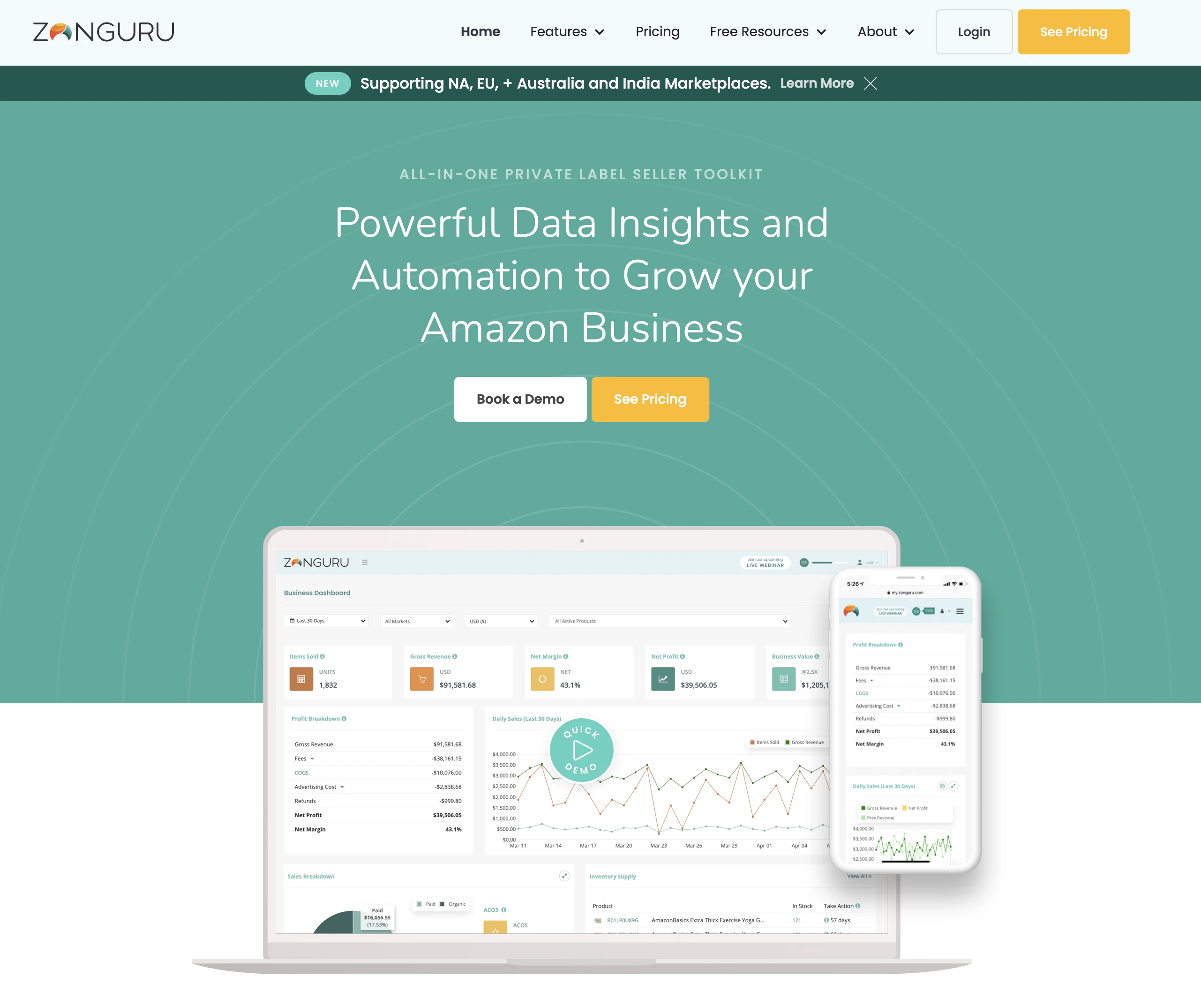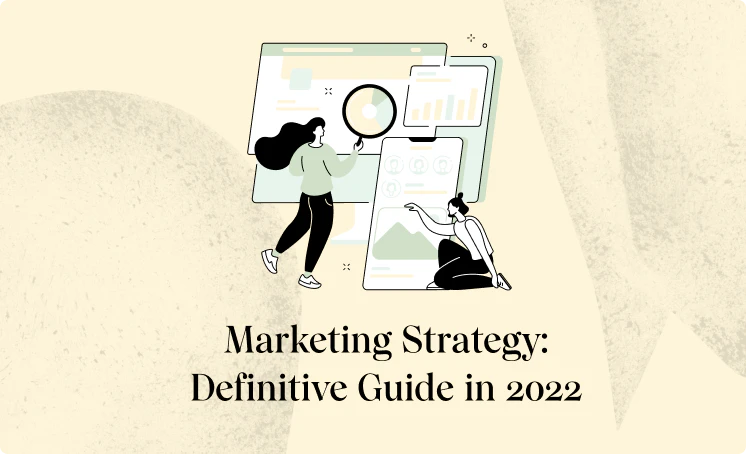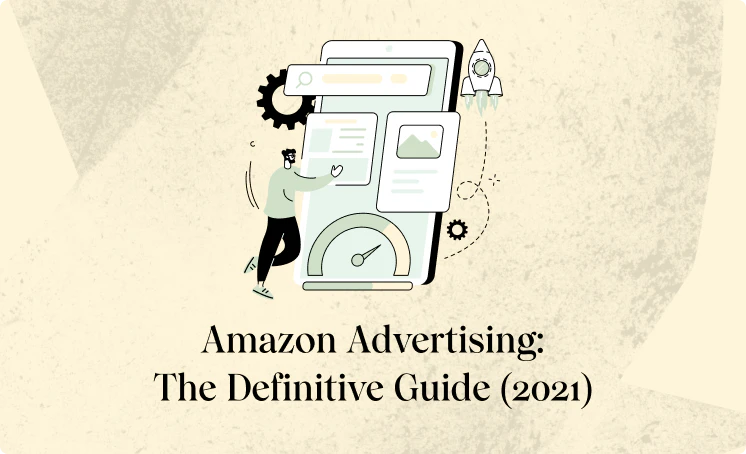Introduction
Are you getting ready to launch a product on Amazon and wondering what tools can help?
In this article, we’ll cover 10 of the best tools on the market that can help. Plus, some added tips to make sure you’re on the right track.
What Are Amazon Product Launch Tools And How Do They Work?
When you’re launching a product on Amazon, you can either do all the legwork manually or use Amazon tools.
Some Amazon tools help you complete the product, audience, and competitor research more quickly and accurately. Other tools will help you to implement the strategy you’ve decided on.
They work by pulling and aggregating data directly from the marketplace and then sharing that data to help you make more educated choices. In addition, many of the tools can make changes on your behalf, like repricing tools.
Almost any task you need to do successfully on Amazon can be completed and complemented by using a tool.
10 Best Product Launch Tools In 2022
Let’s take a look at some of the top Amazon tools available to help you launch your product.
1. HELIUM 10

Helium 10 offers a full suite of Amazon tools that will help you sell on Amazon whether you are just starting or have been selling on the marketplace for a while now.
Helium 10 has over 20 tools to help you research, develop better listings, and optimize your PPC ads.
You can test the tools for free, but to get full use, you’ll need to sign up for a monthly or annual plan. The lowest plan starts at $37/month.
2. ZONGURU

ZonGuru is another option if you are looking for a full stack of Amazon tools.
On top of your standard tools, Zonguru stands out because they make it easy to source new products from Alibaba through their collaboration. The niche finder feature is also great if you are focusing on one audience.
There are two plans available, the researcher for $39/month when billed monthly or the seller for $49/month when billed monthly. Free trials are available for both plans.
3. ZONBLAST

Zonblast was developed by actual Amazon sellers based on the needs they saw from selling on the marketplace.
ZonBlast is known for helping sellers put out promotional “blasts” to boost the product’s ranking.
ZonBlast’s sweet spot is helping products gain initial traction before they need a more comprehensive brand strategy for their campaigns.
ZonBlast is available as part of SixLeaf’s bigger network of tools. To access ZonBlast Classic, it will cost you a minimum of $347.
4. JUNGLE SCOUT

Jungle Scout helps you research your products and your competitors with ease.
Jungle Scout provides a wealth of educational materials that go along with its tools to help both new and advanced sellers.
It even comes with a Chrome extension that lets you do your research right from Amazon.
You can get the basic plan for as low as $29/month if you bill annually, plus a 14-day free trial.
5. VIPON
Vipon helps sellers reach more customers by advertising their discounted products.
You sign up and submit your deal to Vipon, and they send it out to their audience of shoppers willing to try new products at the right price.
The standard plan is $100 per month, plus your discount must be at least 50% off.
6. VIRAL LAUNCH

Viral Launch has a suite of tools that focus on helping sellers hit the ground running.
Viral Launch will help you with your product, keyword, and competitor research for $69 billed monthly.
If you opt for the most expensive plan at $199 billed monthly, Viral Launch will also help you get your PPC ads going.
7. REPRICEREXPRESS.

If pricing is a major part of your strategy, you’re going to need a repricing tool to avoid stalking your competitor listings at all hours.
RepricerExpress is a top-notch tool to help you automatically reprice your products based on your strategy.
The tool isn’t cheap, with the lowest plan starting at $79 per month when billed annually ($99 per month if billed monthly), but it does come with a 14-day free trial.
8. FEEDBACK EXPRESS

Feedback Express will help you manage your feedback without the headaches.
With Feedback Express, you can automatically send requests for feedback, and the tool will alert you if any negative feedback is received.
You can try it for free for 28-days, and after that, you can send up to 5,000 feedback request emails per month for $55/month when you pay annually.
9. SONAR

Sonar is a free keyword tool offered by Sellics (additional paid tools are available from the company).
There are over 180 million keywords indexed, and you can also track your competitors’ keywords with the reverse ASIN lookup feature.
10. AMAZON SELLER APP
If you haven’t downloaded the Amazon Seller App yet, do it now.
You can use the app to help edit your product photos, manage your listings, track sales, and even respond to customer questions and feedback.
The Amazon Seller App lets you stay on top of your product launch no matter what else you are doing as long as you have your phone.
Bonus: 11 Things You Should Do When Launching A Product On Amazon
Now that you know what tools are available to help you launch on Amazon, it’s time to learn what actions you need to focus on.
1. DO YOUR RESEARCH FIRST.
An Amazon business is like any other business in the fact that if you go into it blind, you’re likely going to fail.
You need to do your homework to know what you’re getting into.
Not only do you have to understand how Amazon works – what Amazon is looking for, how the algorithm works, and how customers use the marketplace – but you also need to know what’s going to make your product listings stand out.
An analysis of your competitors, their products, and the keywords they use is an excellent place to start.
Once you’ve looked at your competitors, you’ll know what they lack that you can capitalize on for your product.
You’ll want to continue to prioritize research because things can change rapidly on Amazon, and you have to keep up.
2. GET YOUR PRODUCT AN AMAZON PRIME BADGE.
Making your products eligible for Amazon Prime will get you access to a larger audience.
The Prime program continues to grow as Amazon continues to push it heavily. The customers paying for Prime want to take full advantage of it and gravitate to products that are eligible for the perks like free two-day (or sooner) shipping.
For your product to be Prime eligible, though, you’ll probably need to let Amazon warehouse and ship your products for you.
If you aren’t already familiar with the Fulfilled-By-Amazon (FBA) program, it allows you to ship your pre-packaged products to Amazon warehouses so that when a customer orders, they pack and ship it for you.
It does come with some associated fees, but Amazon favors the products enrolled.
I said probably because Amazon does allow some products to be Prime eligible and fulfilled by the seller, but it isn’t easy to maintain.
Unless you want to spend your life chained to getting your inventory out the door the same day it’s ordered for every single order.
3. PRICE WISELY.
Your customers want to feel like they are getting the best price for their items, and Amazon makes it convenient to compare prices.
When you sell on Amazon, you have no choice but to consider how similar products are priced because your customers are.
But pricing wisely isn’t necessarily setting the lowest price.
If you’ve ever studied pricing psychology, you know that consumers like to go with the middle-of-the-road option most of the time.
However, they will only stick with that logic if your product is distinguished from your competitors in some way.
Whether it’s an additional feature or your package, or your brand, you need to demonstrate how your product is even slightly better.
Because if they compare products and everything is exactly the same, they will go with the lowest price.
When you first start selling on Amazon, it’s going to be hard to command the highest price in your category, but you can work your way up to the higher mid-end at least once you’ve built up your listing.
4. PLAN YOUR NEXT PRODUCT LAUNCH.
Every launch needs its own plan in place. Some of the steps will be the same every time, but the details will vary.
And the details matter when it comes to competing on Amazon.
Assuming that you’ve already determined how your products will be delivered to your customers, you need to focus on how you will get your products in front of the right customers as quickly as possible.
You probably have a pretty good idea of what audience you are looking to target, but if you haven’t labeled your persona profiles yet, now is the time.
Campers looking for outdoor stoves is not a persona.
Are those campers hardcore outdoors enthusiasts who will need a stove that can withstand all the elements for a week, or is it a father looking for an outdoor stove for his family to use one weekend a year?
There will be essential marketing distinctions between those two groups.
You need to decide which one you are going after because marketing to all is often as effective as marketing to no one.
5. PERFECT YOUR BRAND CONTENT.
Now that you know who you are speaking to with your listing and marketing, you need to hone it.
Your content needs to focus on your target audience, whether it be how you set up your product photos or your product title, or your PPC ads.
Go look at your competitor listings with the same target audience and see how they talk about their products. You don’t have to look only on Amazon; you should look at their sites if they have them and any of their social channels.
But don’t just stop at reviewing what your competitors say in their marketing.
What are the customers saying?
Read product reviews, look in niche forums, and if you know anyone that would be the perfect fit for your product, ask them what they would need to know about your product before they would feel comfortable buying.
Once you’ve gathered your data, you will use it throughout your listings and ad campaigns.
6. SET COMPETITIVE OFFERS.
Amazon shoppers rely on reviews from other customers to guide their purchasing decisions, but your new product doesn’t give them anything to go on.
Even if your listing is perfect, your target customers might still be leery of taking the chance on a product without a proven track record. This is where offering another type of incentive can help you get ahead.
The incentive you have at your disposal is pricing.
You could set your product price at the lower end of the range in your product category. Or you could instead use coupons and other deals to give the impression that your customers are getting to try a superior product at a bargain price.
Not all sellers are eligible to run coupons, but luckily Amazon doesn’t exclude new sellers.
You can still run coupons even if you have no feedback. But if you have five or more reviews, you need to have an average rating of 3.5 stars to be able to run coupons. Products with only 1-4 reviews can have a lower average of 2.5 stars to be eligible.
7. USE PROMOTIONS.
At this point, there are no unicorn products on Amazon that have lots of searches but no competition. Sorry, but you’re going to have to work a little harder to get sales.
You’re going to need to run promotions for your new product.
You can choose to run all your promotions through Amazon, or you can mix it up and run promotions on other platforms as a compliment. Many sellers have found success using Facebook and Google ads in addition to ads on Amazon.
Alternatively, you could use influencer marketing with your ad campaigns to give them a boost.
Remember, though, that influencer marketing is much tougher to measure and optimize, so you likely don’t want to use it on its own without other paid efforts.
The right path for your product will depend on how your target audience seeks out information about products they need.
Do they search on Google, ask friends for recommendations on Facebook, or do they go straight to Amazon?
8. MANAGE YOUR ACCOUNT METRICS.
Amazon favors accounts that maintain strong metrics. If you want the algorithms to show your listings, you must stay on top of your ratings.
One of the most basic things you can do is to keep your products in stock. There may be one-off times where there is a rush of sales you weren’t expecting, but for the most part, you should be paying attention to your inventory levels and getting orders into your suppliers in advance to account for hiccups that may occur.
Amazon also looks at your:
- Buyer Feedback
- Cancellation Rate
- On-Time Delivery Rate
- Valid Tracking Rate
- Order Defect Rate
- Late Shipping Rate
If any of these metrics start to dip, you need to take immediate action to find out why and how to fix it. Amazon can and will suspend your account if you don’t.
The best way to avoid running into issues with anything shipping and delivery related is to enroll your products in the FBA program. Using FBA takes half of these metrics out of your hands so you can focus on tasks like marketing and customer service.
9. BROADEN YOUR TARGETED KEYWORDS.
At the product launch stage, you need to go wide with your keywords.
You don’t yet know what keywords will be successful, so you need to be trying out lots of potential winners.
For instance, what some may call a wallet, another may call a billfold. You don’t want to miss out on a customer base because you didn’t address a full range of keywords in your listing. By using both wallet and billfold, you just doubled the volume of keywords you can test for your listing.
Take the time to think about regional and even generational variances in terminology, as well as slang terms that could be used for your products.
If you are selling internationally, seek out possible search terms from native language speakers to the locations you are targeting. Find out what brands are the biggest competitors for your products in their country and look at the keywords they are using.
Of course, you will be limited to how many keywords you can include, but it’s best to be armed with a list you can pull from to swap with any keywords that aren’t performing without having to go back to the drawing board.
10. TARGET NEGLECTED KEYWORDS.
Once your competitors have established their listing, they don’t need to be scrappy and think outside the box anymore.
This opens up an opportunity for you to target what they are missing.
Now that you know all the keywords available, you go comb through your competitors’ listings and determine what keywords they aren’t capitalizing on. Look specifically for long-tail keywords the listing could include but doesn’t.
You can use these neglected keywords to try to sway your competitors’ customers to your listing instead.
Keep in mind, though, the listings that are performing well have likely put in the time to test multiple keywords until they’ve found their sweet spot. They may be omitting certain keywords for a good reason. It’s going to be up to you to figure out if the keywords will work for your listing or if you should leave them out as well.
The keywords may be a good fit but just have a lower search volume your competitors’ listings have outgrown.
11. GO AFTER LONG-TAIL KEYWORDS.
Before you launch your product, you need to develop an extensive list of potential long-term keywords for your product.
Long-term keywords don’t have the massive search volumes of broad terms, but they are more valuable to your new products for two reasons.
1. Less competition
2. Higher purchase intent
When you target ultra-specific keywords, you reach customers who know exactly what they want and are likely ready to buy the moment they find a product that fits their needs. There are fewer products that fit each long-tail keyword, so there is less competition and fewer listings for shoppers to browse before deciding.
This will give your new product that can’t stand up against the established listings that crowd the broad keywords a chance to gain traction.
If you don’t have enough long-tail keywords to target, in the beginning, your listing is going to struggle to grow organically. Plus, you’ll have to spend more on your paid strategy to win the higher search volume terms.
Next Steps After Launching On Amazon
So, you’ve launched your product, but what’s next?
Here are a few next steps to help your product pick up steam.
Work toward an Amazon Best Seller or Amazon Choice badge.
Getting your product an Amazon stamp of approval can go a long way with customers.
To get an Amazon Best Seller badge, you’re going to have to build up a decent sales volume for your category first because it is based solely on sales.
But the Amazon Choice badge is more attainable for new sellers.
If you want to increase your odds of getting an Amazon choice badge, you should enroll in the FBA program, focus on building positive reviews and maintaining a competitive price for your product.
Test everything.
You cannot set up your listing and walk away hoping for the best.
Every aspect of your listing should be strategically tested. What you choose to test will depend on your metrics and customer feedback.
Are you getting a lot of customer questions? If so, you need to re-write your product description to answer the most common ones. If you are getting clicks but no conversions, you could first change up your product photos, and if that doesn’t help, you could change your bullet points.
You will also want to periodically swap out your low-performing keywords for new keywords.
The critical piece to remember is that you should only test one element and that you need to establish a long enough time frame for the test to yield results.
Perfect your Amazon PPC strategy.
Your PPC ads have a lot of moving pieces, and to help guide your choices, you’re going to need a strategy.
Before you set up any ads, you have to know what your maximum ads budget is.
From there, you can decide on keywords, bid types and amounts, and the types of ads that best fit your products and brand goals. It’s a lot to learn and manage, so you need to decide how involved in the strategy and execution you want to be.
If you prefer a more hands-off approach, we can set up and manage your Amazon campaigns for you.
Keep looking for new keyword opportunities that develop.
As we discussed earlier, you should be looking for new opportunities your competitors have missed.
But you should also look for keyword opportunities that develop as your product listing and brand grows.
At some point, you need to start going after the big keywords with high search volumes. You should also test branded keywords if you’ve been putting forth brand-building efforts.
It’s hard to pinpoint exactly when your listing will be able to compete for the broad terms, but you won’t know until you try.
Find additional products that enhance your catalog.
After your product is up and running without too much help, it’s time to start expanding your catalog.
You want your satisfied customers to have something else to purchase from you. And you want that next product to fit the same market, so you aren’t starting from scratch again.
Take what you know from your original research and dig deeper into a few of your runner-up products.
Don’t wait too long before you start building out, or the market could change.
Final Thoughts
Now, when you’re getting ready to launch your next product, you know what you need to do.
You don’t need to use every tool on the market; you just have to decide what your strategy is and find the tools that help you research and implement it.














.webp)

.webp)








.webp)









































.webp)






